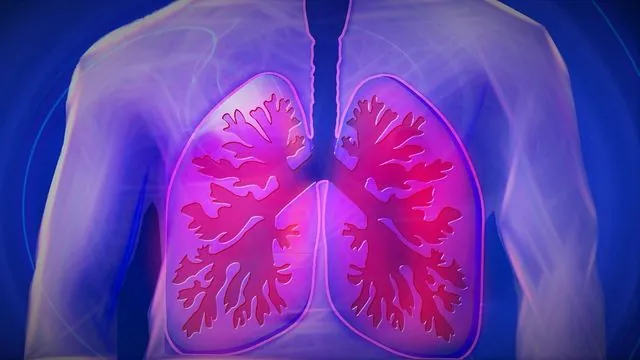
Revolutionary 'Ventilator-On-A-Chip' Model Sheds Light on Mechanical Ventilation-Induced Lung Injuries
2024-09-19
Author: Daniel
Overview of the Study
In a groundbreaking study, scientists have made significant strides in understanding the injuries caused by mechanical ventilation on lung cells. For the first time, researchers at The Ohio State University have employed an innovative 'ventilator-on-a-chip' model to directly compare the various types of cellular damage inflicted by mechanical ventilation.
The Ventilator-On-A-Chip Model
The ventilator-on-a-chip model simulates not only the injuries sustained during mechanical ventilation but also the subsequent repair and recovery processes occurring in human-derived cells in real-time. Co-lead author Dr. Samir Ghadiali, a professor and chair of biomedical engineering at Ohio State, highlights that the initial damage from ventilation is predominantly physical, while the post-injury processes are biological, allowing the coupling of these two dynamics using their advanced device.
Significance of the Research
The implications of this research are significant; it opens avenues for developing therapies to combat ventilator-induced lung injuries. Co-lead author Dr. Joshua Englert, an associate professor of pulmonary, critical care, and sleep medicine at The Ohio State University Wexner Medical Center, emphasizes that a deeper understanding of lung injury mechanisms in mechanically ventilated patients could lead to identifying therapeutic targets. This would assist in both preventing and treating such injuries effectively.
The Dual-Edged Sword of Ventilators
Published recently in the journal Lab on a Chip, the research reveals the dual-edged sword of ventilators, which are essential for saving lives in patients facing severe respiratory issues linked to disease or trauma. Nevertheless, the mechanical forces from these devices can also inflict substantial cellular damage. This damage disrupts the delicate barrier between microscopic air sacs and blood-carrying capillaries, resulting in fluid accumulation that hinders oxygen transfer in the lungs.
Key Findings of the Study
One of the standout features of this ventilator-on-a-chip model is its capacity to monitor real-time changes in the cells that maintain this critical barrier. The research team utilized a synthetic nanofiber membrane that closely resembles the complex lung matrix, setting a new standard in modeling the ventilated lung microenvironment.
The findings demonstrated how different types of mechanical stress affected the integrity of the cell barrier. Specifically, experiments indicated that both overinflation and the cyclical collapse and reopening of air sacs resulted in a leaky barrier. However, cells showed a quicker recovery from overinflation compared to injuries from the repetitive cycles of collapse and reopening. Dr. Englert noted that this latter phenomenon could be particularly harmful due to the high shear stress it exerts on lung cells, further underlining the urgency for therapeutic solutions.
Future Research Directions
This remarkable research illustrates the sophistication of the ventilator-on-a-chip model. The ability to measure the rapid and severe effects of collapse and reopening injuries in real-time marks a pivotal advancement in the field. The team plans to leverage this technology to explore methods to prevent such injuries and enhance recovery processes.
Looking ahead, researchers aim to model additional conditions, such as pneumonia or traumatic injuries typically encountered by ICU patients, in conjunction with mechanical ventilation. Dr. Englert stated that they are in the initial stages of developing these complex models, paving the way for enriched understanding and targeted treatment strategies for lung injuries in critically ill patients.
Conclusion
As the landscape of critical care continues to evolve, innovations such as the ventilator-on-a-chip model promise to transform our approach to lung health and patient recovery, potentially saving countless lives in the process.

 Brasil (PT)
Brasil (PT)
 Canada (EN)
Canada (EN)
 Chile (ES)
Chile (ES)
 Česko (CS)
Česko (CS)
 대한민국 (KO)
대한민국 (KO)
 España (ES)
España (ES)
 France (FR)
France (FR)
 Hong Kong (EN)
Hong Kong (EN)
 Italia (IT)
Italia (IT)
 日本 (JA)
日本 (JA)
 Magyarország (HU)
Magyarország (HU)
 Norge (NO)
Norge (NO)
 Polska (PL)
Polska (PL)
 Schweiz (DE)
Schweiz (DE)
 Singapore (EN)
Singapore (EN)
 Sverige (SV)
Sverige (SV)
 Suomi (FI)
Suomi (FI)
 Türkiye (TR)
Türkiye (TR)
 الإمارات العربية المتحدة (AR)
الإمارات العربية المتحدة (AR)